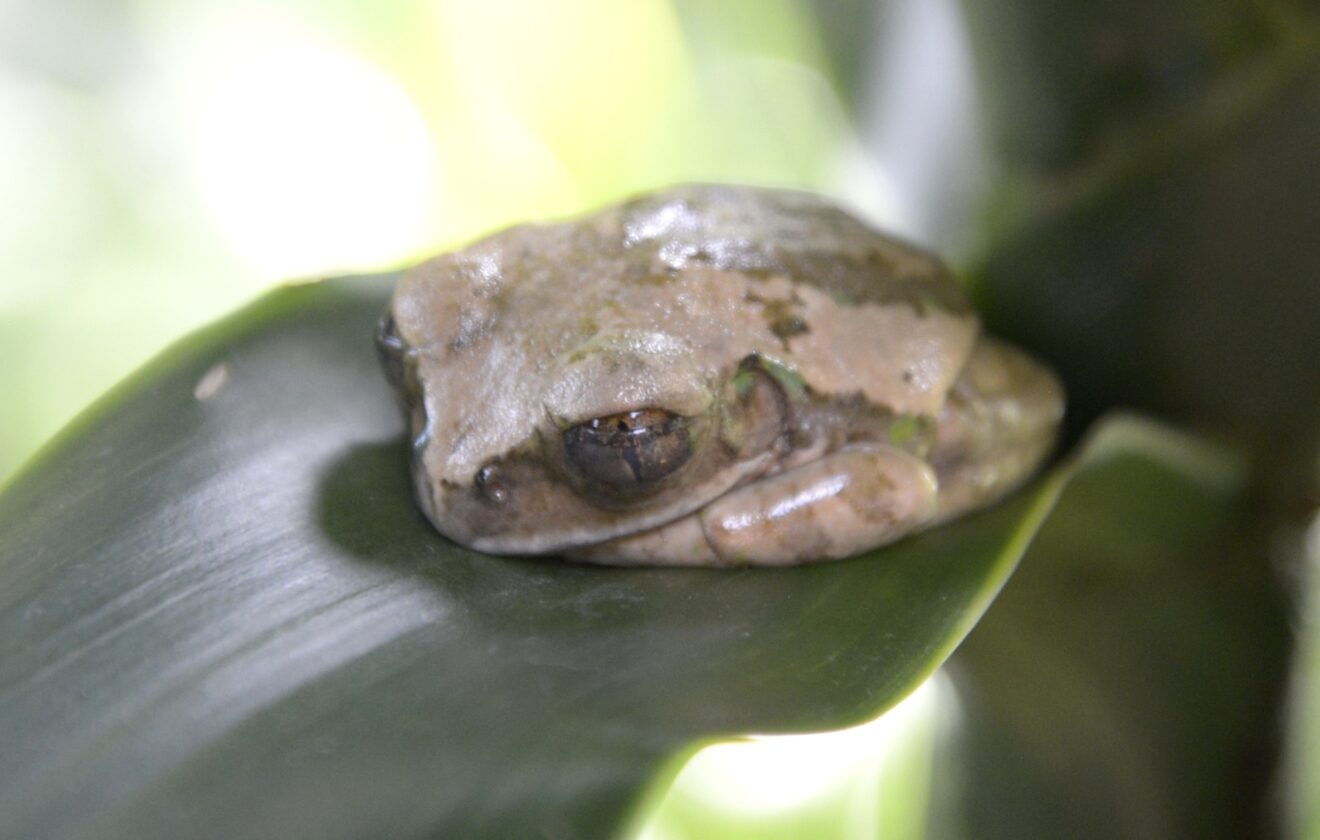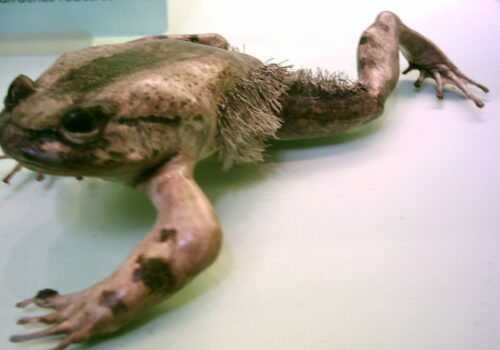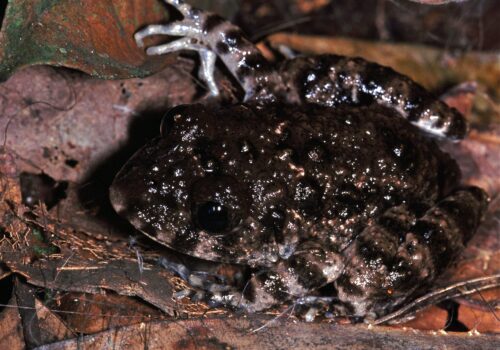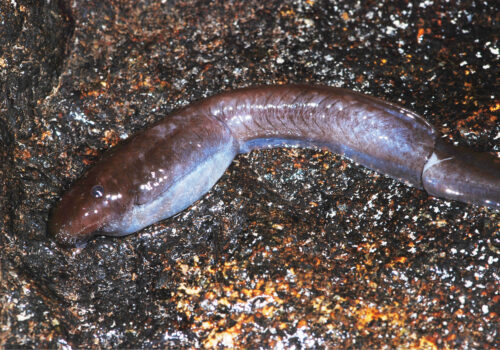- Introduction: A Hidden Jewel in Africa's Forest Canopies
- Taxonomy and Classification: Placing the Yellow-spotted Tree Frog in Context
- Natural Habitat: The Vibrant Forests of East Africa
- Physical Characteristics: Beauty in Subtlety
- Behavior and Life Cycle: Echoes Through the Night
- Ecological Role: A Crucial Steward of Forest Health
- Threats and Conservation Status: Protecting a Precious Amphibian Treasure
- Cultural and Scientific Significance: More Than Just a Frog
- Conclusion: Guardians of the Forests' Harmony
Introduction: A Hidden Jewel in Africa’s Forest Canopies#
Amidst the lush greenery of East African tropical forests, hidden in the shadows beneath the thick foliage or resting quietly upon moss-covered branches, lives a small amphibian gem—Leptopelis flavomaculatus, commonly known as the yellow-spotted tree frog. With luminous eyes that gleam in the moonlit rainforest and striking coloration that elegantly blends with its surroundings, this frog is as captivating as it is elusive.
Native exclusively to East African forests and particularly abundant in Tanzania, the yellow-spotted tree frog has stirred the curiosity of naturalists and herpetologists alike. Although modest in size and subtle in its nightly routines, this amphibian plays a profoundly critical role—one often overlooked yet integral to ecosystem health. From its melodic night choruses to peculiar breeding rituals, the life of Leptopelis flavomaculatus is a fascinating testament to biological adaptation and ecological interconnectedness.
Taxonomy and Classification: Placing the Yellow-spotted Tree Frog in Context#
The yellow-spotted tree frog carries the scientific designation Leptopelis flavomaculatus, placing it within the Arthroleptidae family—an extensive group of African tree frogs renowned for their diversity and adaptability. Within this family lies the genus Leptopelis, comprising vibrant species known for their intriguing nocturnal behaviors and compelling breeding calls.
Close relatives within this genus share similar behaviors and habitats, but L. flavomaculatus distinguishes itself through distinct coloration and markings. The species epithet “flavomaculatus,” derived from Latin terms meaning ‘yellow spots,’ aptly describes its characteristic skin pigmentation and vivid coloration patterns that vary from pale olive greens to deeper browns, coupled with unmistakable golden-yellow patches along its back and limbs.
Natural Habitat: The Vibrant Forests of East Africa#
The rich forests spanning the Eastern Arc Mountains and coastal regions of Tanzania provide the perfect refuge for Leptopelis flavomaculatus. Here, amidst towering hardwood trees, vibrant epiphytes, and dense undergrowth, these tree frogs have expertly carved out their survival strategy. Ranging from humid lowland forests to moderately elevated montane regions, they make optimum use of rain-season water bodies and surrounding vegetation for breeding and refuge.
A Forest-Dweller’s Sanctuary#
Unlike their terrestrial cousins, yellow-spotted tree frogs exhibit strong arboreal tendencies, frequently occupying shrubbery and lower tree branches near seasonal streams and waterholes. The complexity of their rainforest habitat facilitates numerous hiding places from predators and supplies ample insect prey. Decaying logs, moss-covered rocks, and leafy foliage all contribute to their sense of home. Each wet season replenishes their habitats, bringing fresh pools of water essential for their reproductive cycles.
Physical Characteristics: Beauty in Subtlety#
Leptopelis flavomaculatus is a study in understated elegance. Typically measuring between 4 to 6 centimeters in length, these modest-sized frogs possess smooth, moist skin with colors ranging from warm olive greens to earthy browns, speckled generously with the eponymous vibrant yellow or golden spots. Their bright, prominent eyes provide exceptional nocturnal vision, crucial for their active hunting lifestyle after dusk.
The frog’s toes feature expansive pads, superbly adapted for a life spent predominantly in trees, allowing a secure grip upon leaves, branches, and mossy tree trunks. Subtle yet effective camouflage helps them evade predators and simultaneously approach prey unnoticed. The unique coloration not only serves as camouflage but might also signal toxicity or unpalatability, deterring potential attackers who associate brightness with risk.
Behavior and Life Cycle: Echoes Through the Night#
As twilight relinquishes its hold to the deeper darkness of night, the coastal Tanzanian forests ring with distinct metallic chirps and resonating calls—a signature of male Leptopelis flavomaculatus frogs engaged in their nightly serenades. These calls, both enchanting and eerie, play a crucial role in attracting females for mating, guiding them through dense vegetation toward carefully selected breeding sites near shallow waters.
Feeding Habits: Patient Ambushers of the Dark#
Primarily insectivores, yellow-spotted tree frogs stealthily await their prey—ranging from nocturnal insects, arachnids, small arthropods, to tiny invertebrates. With lightning-fast reflexes, a sudden leap, or a flick of their sticky, specialized tongue, they deftly capture their next meal. Their diet contributes significantly to maintaining ecological balance, naturally regulating insect populations and performing a crucial pest-control role within their habitats.
Breeding and Parental Care#
During the rainy seasons, these frogs intensify their breeding activities. Aggregating near temporary forest ponds and shallow freshwater pools, males issue persistent calls to attract females. After pairing, the females deposit clusters of gelatinous eggs carefully attached to submerged vegetation, ensuring the eggs remain hydrated, oxygenated, and adequately concealed.
After hatching, tadpoles inhabit these ephemeral bodies of water, going through rapid transformations before they disappear. A fascinating adaptation, this rapid development period helps avert predation and the drying up of seasonal aquatic habitats. Juveniles soon emerge onto dry land, climbing into nearby flora where they continue their adult lives.
Ecological Role: A Crucial Steward of Forest Health#
Leptopelis flavomaculatus fulfills a pivotal role within its ecosystem as both predator and prey, intricately intertwined in the web of balance high within Tanzanian rainforests. By consuming vast numbers of insect prey, these frogs expertly keep potential pest populations in check, indirectly promoting the health and growth of forest plant life.
Conversely, as a food source for various birds, reptiles, and larger mammals, this species supports the dietary needs of numerous forest creatures—reinforcing biodiversity and overall ecological resilience. Furthermore, amphibians like L. flavomaculatus often function as sensitive bioindicators, their population health signaling the broader state of the forest ecosystem.
Threats and Conservation Status: Protecting a Precious Amphibian Treasure#
Currently classified by the International Union for Conservation of Nature (IUCN) as a species of Least Concern, the yellow-spotted tree frog benefits from relatively stable populations across well-protected stretches of Tanzanian rainforests. However, like peculiar sentinels, amphibians worldwide are increasingly vulnerable to environmental hazards.
Emerging Conservation Concerns#
Habitat destruction through logging, agricultural expansion, and human settlement continues to threaten pristine ecosystems vital to this species’ survival. Additionally, climate change poses a significant threat—altering rainfall patterns, disrupting seasonal breeding behaviors, and rapidly changing delicate microclimates.
Strengthening Conservation Efforts#
Fortunately, national parks, environmental protection organizations, and global conservation initiatives are actively collaborating to safeguard habitats crucial to species such as Leptopelis flavomaculatus. Strengthened terrestrial protection and expanded environmental education efforts remain crucial to ensuring that future generations can still find these enchanting frogs thriving in their natural homes.
Cultural and Scientific Significance: More Than Just a Frog#
Beyond ecological roles, distinct amphibians like the yellow-spotted tree frog carry cultural resonance for many East African communities. In some villages, frogs symbolize abundant rains and fertile crops, embedding these frogs deeply within local folklore. Scientific exploration has also shed new light on amphibian biology and bioindicator roles, potentially aiding climate-related research.
Conclusion: Guardians of the Forests’ Harmony#
Through vibrant ecological roles, remarkable resilience, and captivating life cycles, Leptopelis flavomaculatus exemplifies the fragile yet enduring beauty of East Africa’s biodiversity. This unassuming amphibian reminds us daily of the interconnectedness of all life, encouraging us to take action and support dedicated conservation measures.
By understanding, valuing, and protecting these humble yet profound creatures, we cement our commitment to preserving not only a single exquisite species but also the delicate harmony of the planet we all call home.

















